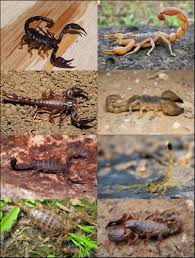Scorpions, belonging to the class Arachnida, are captivating creatures that have roamed the Earth for millions of years. With over 2,000 known species, these arachnids exhibit a wide range of sizes, colors, and behaviors, making them a subject of intrigue for both scientists and enthusiasts.
Physical Characteristics of Scorpions
Scorpions are characterized by their distinctive appearance, featuring a set of pincers (pedipalps) and a segmented tail that ends with a venomous stinger. Their exoskeletons are tough and protective, often displaying shades of brown, black, or yellow. Some species exhibit fluorescent properties under ultraviolet light, adding to their mystique.
Habitats of Scorpions
Scorpions have adapted to various environments, ranging from deserts and rainforests to grasslands and caves. Their ability to withstand extreme conditions contributes to their widespread distribution across the globe. These arachnids are nocturnal, avoiding the heat of the day and emerging at night to hunt for prey.
Feeding and Hunting of Scorpions
Primarily carnivorous, scorpions feed on insects, spiders, and even small vertebrates. Their pincers are used to grasp and immobilize prey, while the venomous stinger injects toxins to subdue and begin the digestion process. Despite their fierce reputation, scorpions play a crucial role in controlling insect populations, maintaining ecological balance.

Venom of Scorpions
The potency of scorpion venom varies among species. While most scorpion stings cause mild symptoms, a few can be dangerous to humans. Neurotoxins in their venom target the nervous system, leading to pain, numbness, and, in rare cases, more severe reactions. However, fatalities are extremely rare, and medical attention can effectively treat most stings.
Reproduction of Scorpions
Scorpions engage in elaborate courtship rituals, involving intricate dances and pheromones. Once mating occurs, the female may carry the developing embryos inside her abdomen. The gestation period varies, but eventually, she gives birth to live young, which then climb onto her back for protection until they are capable of independent survival.
Adaptations of Scorpions
Survival is paramount for scorpions, and they have evolved various adaptations. Their exoskeleton provides protection, and their ability to slow down their metabolic rate allows them to endure periods of food scarcity. Additionally, some species can withstand extreme temperatures and even go without water for extended periods.
Cultural Significance of Scorpions
Throughout history, scorpions have held symbolic significance in various cultures. In ancient Egypt, scorpions were associated with the goddess Isis and were both feared and revered. Today, they often appear in folklore, mythology, and even astrology, showcasing their enduring impact on human imagination.
In conclusion, scorpions are remarkable arachnids that have withstood the test of time. From their ancient origins to their diverse adaptations, these creatures continue to captivate our curiosity. While some species possess venom that demands respect, most scorpions contribute positively to ecosystems by controlling insect populations. Studying and understanding these arachnids not only deepens our appreciation for biodiversity but also highlights the delicate balance of nature in which they play a vital role.
